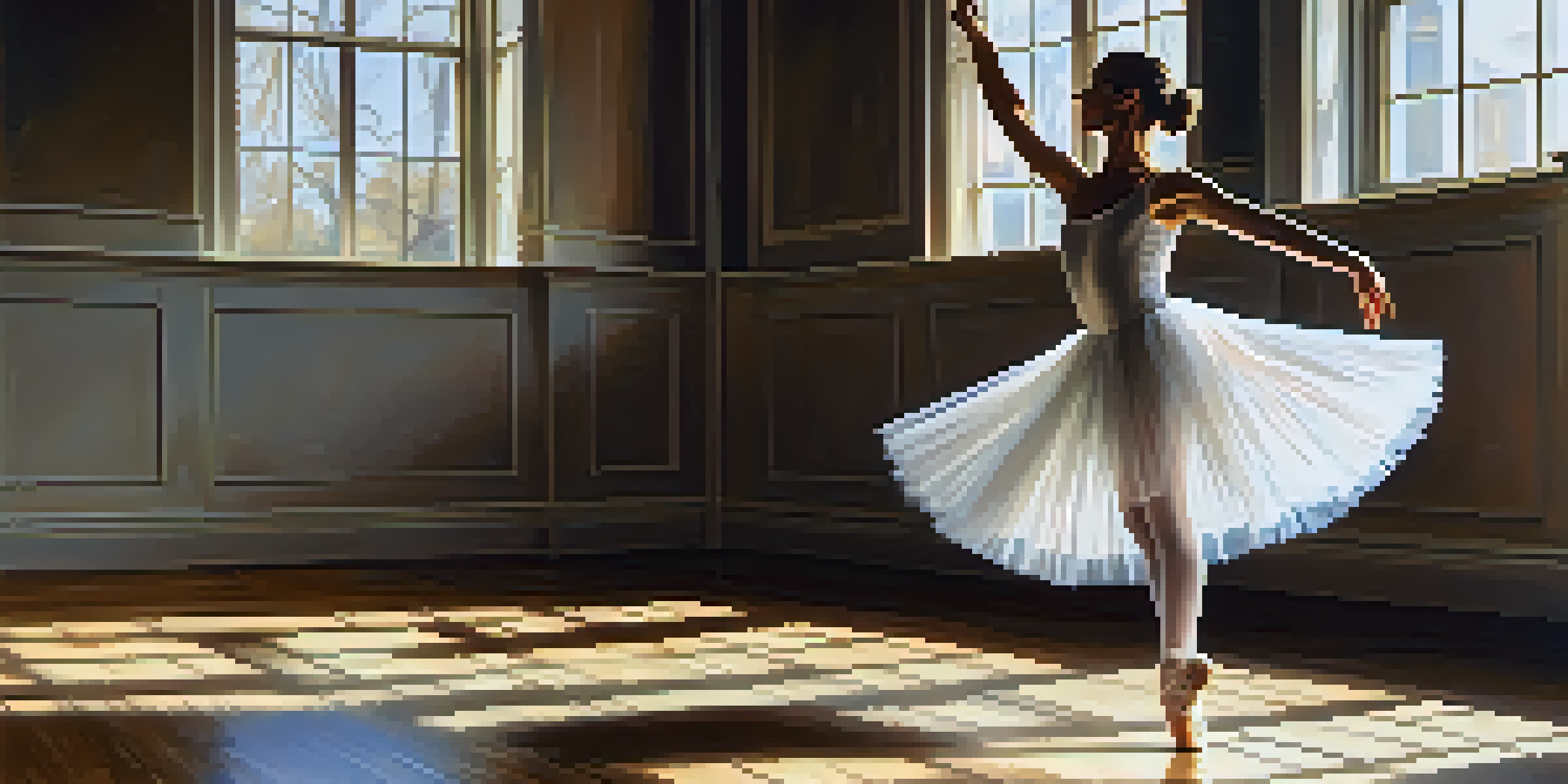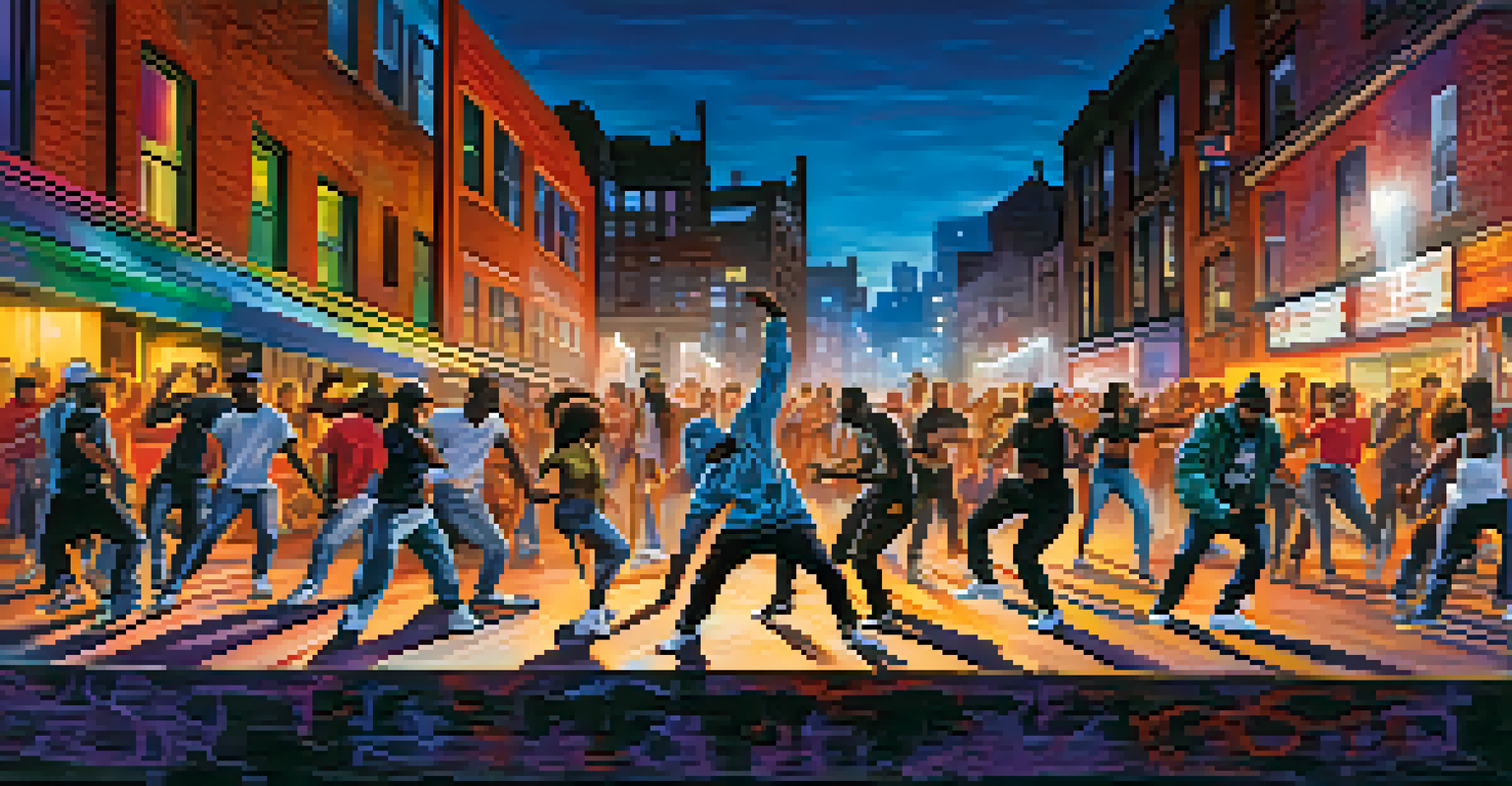Judging Dance Competitions: Common Misconceptions Debunked

Judges Are Just Looking for Technical Skill
Many people believe that judges in dance competitions focus solely on technical skill. While technique is important, it’s just one piece of the puzzle. Judges also assess artistry, creativity, and performance quality, which can elevate a technically skilled routine to a memorable performance.
Dance is the hidden language of the soul.
Consider the difference between a dancer executing perfect pirouettes and one who tells a compelling story through movement. A routine filled with emotion and expression can resonate more with audiences and judges alike. This highlights the multifaceted nature of dance that goes beyond sheer technique.
In essence, dance competitions evaluate a dancer's ability to connect with the audience and convey emotions, making it crucial to balance technical prowess with artistic interpretation.
All Judges Have the Same Criteria
Another common misconception is that all judges use the same criteria for scoring. In reality, judges may have different backgrounds, experiences, and preferences, leading to varying interpretations of the same performance. Some may prioritize creativity, while others might emphasize synchronization or stage presence.

For instance, a judge with a background in ballet may focus more on classical technique, whereas a hip-hop judge might look for energy and originality. This diversity is what makes dance competitions exciting, as it allows for a variety of perspectives and styles to shine.
Judging Goes Beyond Technical Skill
Judges evaluate artistry, creativity, and emotional connection alongside technical proficiency in dance performances.
Understanding that each judge brings their unique lens to the table can help dancers appreciate the subjectivity of the scoring process, fostering a more open-minded approach to feedback.
Judging Is an Easy Job Anyone Can Do
Many assume that judging dance competitions is a walk in the park, but it requires a deep understanding of dance and a keen eye for detail. Judges must evaluate numerous performances in a limited time, balancing their assessments while maintaining fairness and objectivity.
The only way to do great work is to love what you do.
Think of it like being a sports referee: one must be familiar with the rules, able to make quick decisions, and manage the pressure of the moment. Judges spend years honing their skills, attending workshops, and keeping up with current trends, making it a demanding role.
So, the next time you watch a competition, remember that the judges are seasoned professionals dedicated to providing constructive feedback and recognizing talent.
Dancers Should Always Agree With Judges' Scores
It's common for dancers and their supporters to feel frustrated when scores don’t match their expectations. However, it's essential to recognize that judging is subjective, and differing opinions are a natural part of the process. Just like art, dance evokes personal interpretations, and what resonates with one person may not resonate with another.
When a dancer receives a lower score than anticipated, it can be disheartening but also an opportunity for growth. Constructive criticism from judges can provide valuable insights that can help dancers refine their craft and improve in future performances.
Subjectivity Influences Judging
Each judge's unique background and preferences lead to differing interpretations and scores for the same performance.
Ultimately, embracing feedback—whether positive or negative—can enrich a dancer's journey and help them evolve as artists.
More Points Equal Better Performance
A prevalent myth is that more points automatically translate to a superior performance. While scores indicate a level of proficiency, they don’t necessarily correlate with the emotional impact or artistic merit of a dance. A routine can score lower yet leave an indelible mark on the audience simply due to its originality or connection.
For example, a unique concept that showcases a dancer's personality might not score as highly in technical execution but could still be the audience's favorite. This reinforces the idea that dance is not just about numbers—it's about storytelling and connection.
Thus, dancers should focus on delivering authentic performances rather than solely chasing high scores.
Judging Is Unbiased and Fair
While judges strive for impartiality, biases can sometimes influence scoring. Factors like personal preferences, familiarity with specific styles, or even prior relationships with dancers can inadvertently affect their judgment. It's crucial for judges to remain aware of their biases and work consciously to minimize their impact.
This doesn’t mean that the judging process is inherently flawed; rather, it highlights the human element involved. Just as dancers bring their unique experiences to the stage, judges come with their perspectives, which can either enrich or complicate the assessment.
Success Is More Than Winning
Participation in competitions fosters growth, learning, and resilience, making the journey just as valuable as accolades.
Recognizing this aspect reminds everyone involved in competitions to approach the results with a balanced mindset, understanding that imperfections exist in any subjective evaluation.
Winning Is the Only Validation in Dance Competitions
A common misconception is that winning is the only measure of success in dance competitions. While accolades are certainly nice, they don’t encompass the entirety of a dancer's journey. Participation itself offers invaluable experiences, such as learning from feedback, networking with peers, and gaining stage presence.
Take a moment to think about the growth that comes from performing in front of an audience, regardless of the outcome. Each competition is a learning opportunity, and dancers can take away lessons that contribute to their development, both as performers and individuals.

In the end, the true victory lies in personal growth, resilience, and the joy that dance brings to both the performer and the audience.
Judges Don’t Care About the Dancers' Well-Being
Some believe that judges are solely focused on scores and outcomes, neglecting the well-being of the dancers. However, many judges genuinely care about the artists they evaluate and aim to provide constructive feedback to encourage their growth. Most judges have been dancers themselves and understand the challenges and pressures participants face.
For instance, judges often take the time to give personalized feedback, helping dancers understand their strengths and areas for improvement. This demonstrates a commitment not just to the competition, but to nurturing the next generation of dancers.
Thus, it's essential for dancers to recognize that behind the judging panel are individuals who are passionate about the art of dance and genuinely want to see them succeed.